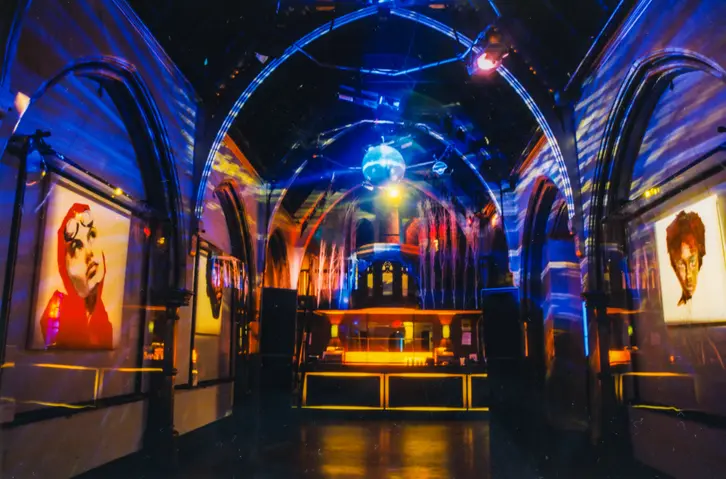Once a beacon of nightlife and revelry, the iconic Limelight Nightclub is set to undergo a remarkable transformation into a vibrant theater. This shift marks a significant moment in the cultural tapestry of the city, promising a blend of historic charm and contemporary artistry.
An Architectural Marvel
The Limelight’s story begins with its architecture. Built in the mid-19th century, the Episcopal Church of the Holy Communion stood as a testament to Gothic Revival design, with its towering spires, stained glass windows, and vaulted ceilings. By the 1970s, however, the church had fallen into disuse. In 1983, entrepreneur Peter Gatien transformed the sacred space into what would become one of the most famous nightclubs in the world.
A Glimpse into the Past
The Limelight Nightclub has a storied past that is as colorful as its stained glass windows. After its establishment in the 1980s, it quickly became a hotspot for clubgoers, celebrities, and musicians. The club’s Gothic architecture provided an otherworldly backdrop to the pulsating beats of electronic dance music and the lively chatter of its patrons. Over the years, Limelight evolved, hosting a variety of events from fashion shows to art exhibitions, cementing its place as a versatile cultural venue.
However, Limelight’s fame was often overshadowed by controversy. The club’s history is marred by legal battles, drug raids, and stories of excess that contributed to its infamous reputation. Nicknamed the “Clubland King,” Peter Gatien faced multiple legal challenges, culminating in his deportation in 2003. Despite these challenges, Limelight managed to remain a beloved fixture in the nightlife scene until its permanent closure in 2007.

The Vision
The vision for the new Limelight Theater is ambitious and inspiring. The transformation aims to create a multifaceted performance space that can host a wide range of events, including theatrical productions, concerts, dance performances, and more.
Forbes reports that the 21,000-square-foot venue will boast a circular stage surrounded by seats on two levels, along with four bars and dressing rooms on the third floor.
“We believe that this is the most beautiful building in Manhattan, and what we would like to do is create a very kind of cultural institution […] where we can present high-quality entertainment,” said Scott Moore, marketing director at Arnold’s production company, in a statement to Forbes.
With the location’s rich history and the effort required to open a new cultural hub, this project is clearly a significant undertaking. Fortunately, Marvel Architects, the masterminds behind Brooklyn’s St. Ann’s Warehouse and the Lyric Theater in midtown Manhattan, will be steering the ship.

A New Chapter
Today, the former Limelight Nightclub’s transformation symbolizes a new beginning for the historic venue, preserving its architectural beauty while embracing a new cultural mission. As Limelight Theater, the space aims to foster artistic performances and community engagement, breathing new life into a landmark that has seen so much history.
Limelight’s journey from a deconsecrated church to a notorious nightclub and now a theater reflects the ever-changing nature of New York City itself. It stands as a testament to the city’s ability to reinvent and re-imagine its spaces, continually shaping its cultural identity in the process.




